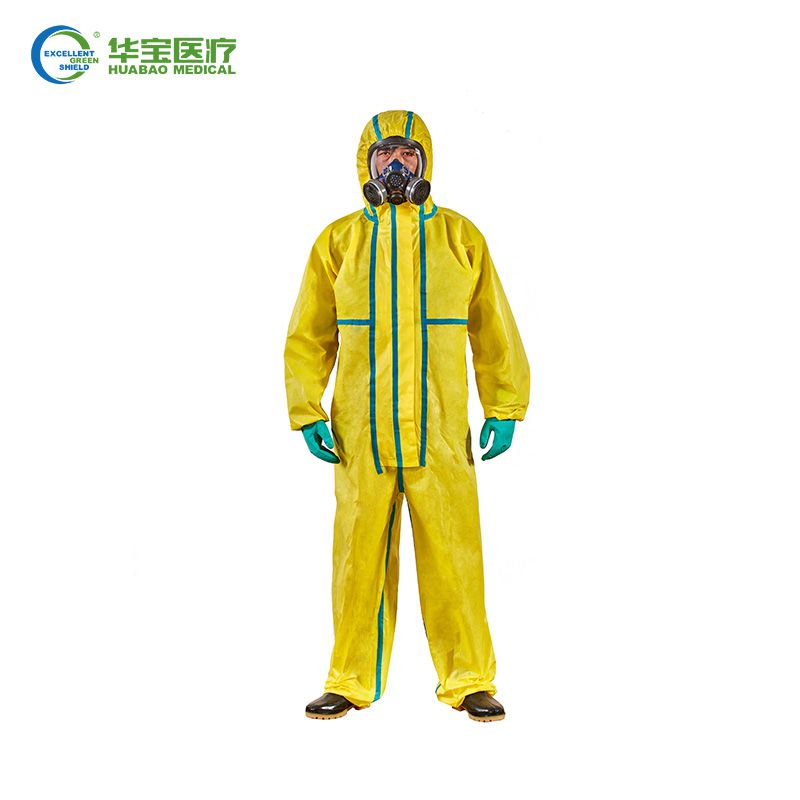How to pick the right chemical coverall for your application?
Chemical coveralls are essential protective garments used in various industries to shield workers from hazardous chemicals, contaminants, and other harmful substances. Choosing the right chemical coverall for your application involves considering several key factors to ensure optimal protection and safety. Let's explore how to select the proper chemical coverall for your specific needs:
Assess the Hazardous Substances:
1. Identify the Chemicals: Determine the types of hazardous substances present in your work environment, including liquids, gases, vapors, and particulates. Consult safety data sheets (SDS) and risk assessments to identify the specific chemicals you need protection against.
2. Understand Chemical Properties: Consider the properties of the chemicals, such as toxicity, reactivity, and permeation rates. Select chemical coveralls that are resistant to the specific chemicals you will encounter to prevent penetration and exposure.
Evaluate Environmental Conditions:
1. Temperature and Humidity: Assess the temperature and humidity levels in your work environment, as these factors can impact the performance and comfort of chemical coveralls. Choose coveralls with appropriate breathability and moisture-wicking properties for comfort during prolonged wear.
2. Physical Hazards: Determine if there are any physical hazards present, such as sharp objects, abrasions, or puncture risks. Select chemical coveralls with reinforced seams, durable fabrics, and abrasion-resistant coatings for added protection against physical hazards.

Consider Design and Features:
1. Material Composition: Choose chemical coveralls made from materials that offer adequate protection against the specific chemicals and hazards present in your workplace. Common materials include polyethylene, polypropylene, Tyvek®, and chemical-resistant laminates.
2. Closure Systems: Consider closure systems, such as zippers, hook-and-loop fasteners, or snap buttons, that provide a secure and snug fit to prevent contaminants from entering the coverall. Ensure closures are chemical-resistant and easy to use for quick donning and doffing.
3. Seams and Reinforcements: Look for coveralls with sealed seams or welded seams to prevent liquid penetration and enhance durability. Reinforced knees, elbows, and cuffs can provide added protection and durability in high-wear areas.
4. Sizing and Fit: Choose chemical coveralls that are available in a range of sizes to ensure a proper fit for all workers. A proper fit is essential for comfort, mobility, and effective protection against chemical exposure.
Verify Compliance and Certification:
1. Regulatory Standards: Ensure that the chemical coveralls meet relevant regulatory standards and certifications, such as those set by organizations like the Occupational Safety and Health Administration (OSHA) or the European Union's CE marking. Look for coveralls that comply with standards for chemical resistance, permeation, and protective clothing performance.
2. Manufacturer Recommendations: Follow manufacturer recommendations for proper use, care, and maintenance of chemical coveralls to ensure optimal performance and longevity. Inspect coveralls regularly for signs of wear, damage, or degradation and replace them as needed.
Conclusion:
In conclusion, selecting the right chemical resistant coveralls for your application involves assessing the hazardous substances present, evaluating environmental conditions, considering design and features, and verifying compliance with regulatory standards. By considering these factors and choosing chemical coveralls that offer adequate protection, durability, and comfort, you can ensure the safety and well-being of workers exposed to hazardous chemicals and contaminants in the workplace.



